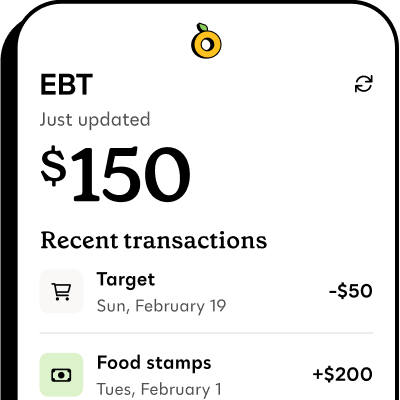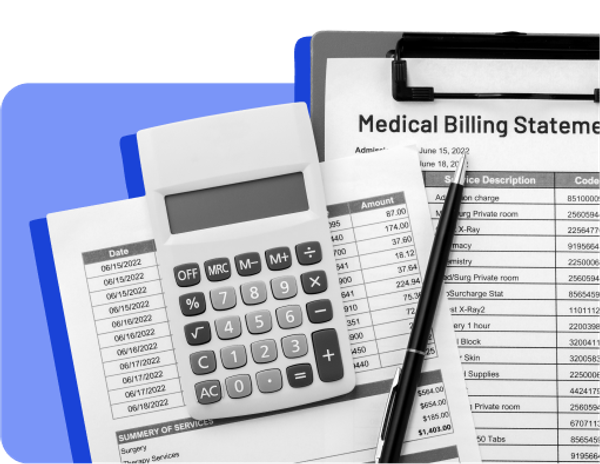Medicaid cuts explained: What the “Big Beautiful Bill” means for Medicaid recipients


Additional expert review by
- New Medicaid work requirements
- More frequent eligibility checks and Medicaid renewals
- Higher out-of-pocket costs for Medicaid
- Changes to immigrant eligibility for Medicaid
- Shorter period of retroactive coverage for medical bills
- Fewer clinics for reproductive care
- Changes for Medicaid and Medicare dual enrollees
- When will Medicaid cuts and changes start?
- What you should do now if you’re on Medicaid
Table of contents
- New Medicaid work requirements
- More frequent eligibility checks and Medicaid renewals
- Higher out-of-pocket costs for Medicaid
- Changes to immigrant eligibility for Medicaid
- Shorter period of retroactive coverage for medical bills
- Fewer clinics for reproductive care
- Changes for Medicaid and Medicare dual enrollees
- When will Medicaid cuts and changes start?
- What you should do now if you’re on Medicaid
On July 4, 2025, President Trump signed the legislation typically referred to as the “Big Beautiful Bill” into law. This means changes to Medicaid and SNAP along with other benefits programs.
If you are a low-income adult, parent, a senior age 65 or over, caregiver, or have a disability, Medicaid changes could affect you.
The changes to Medicaid include:
- Updated work requirements (Starts Jan. 1, 2027 but states can choose to start earlier)
- Other eligibility changes like restrictions for some immigrant groups (Starts Oct. 1, 2026)
- More frequent renewals (Starts Dec. 31, 2026 but states can start earlier)
- More out-of-pocket costs (starts Oct. 1, 2028)
These may affect your ability to get health care—here’s what you need to know about changes and cuts to Medicaid and when to expect them.

Propel is the #1-rated EBT balance checking app
New Medicaid work requirements#new-medicaid-work-requirements
Starting in January 2027, adults aged 19 to 64 must work 80 hours a month to keep their Medicaid. If you are exempt from this rule (see below), you don’t have to meet these requirements.
One important detail is that states have the option to start Medicaid work requirements before January 2027. If you’re currently on Medicaid, be on the lookout for emails or letters from your state about work requirements that might affect you.
Many people are exempt from these new rules. You won’t have to meet Medicaid work requirements if you are:
- An adult age 65 or older or under the age of 19
- Pregnant
- Someone who gave birth recently (this can mean up to 12 months depending on your state)
- Someone who gets SSI or is considered disabled, medically frail, or seriously ill
- A parent, guardian, or caregiver of a child age 13 or younger, or a person with a disability
- A veteran with a total disability rating
- A member of a federally recognized tribe, a California Indian (under federal law), or otherwise eligible for Indian Health Services (IHS)
- Incarcerated, or were incarcerated in the last three months
- Living in a county with a declared disaster/emergency, or high unemployment (greater than 8% or 1.5 times the national rate)
- Participating in a rehab or a substance use treatment program
What counts as “work” for Medicaid?#what-counts-as-work-for-medicaid
In order to meet the Medicaid work requirements, you must do one (or some) of the following:
- Work at least 80 hours per month (paid employment of any kind). To find work or job training opportunities, explore your state’s Workforce Development Agency, Department of Labor, or Division of Vocational Rehabilitation websites.
- Earn the equivalent of 80 hours at federal minimum wage, even if you didn’t work that exact number of hours. The federal minimum wage is $7.25 an hour, so you would need to earn $580 per month. This income can come from self-employment, a business, or other income sources
- Complete 80 hours of community service, job training, or a work program (unpaid activities are allowed). You can find local opportunities to volunteer or do community service by checking out local food banks, charities, houses of worship, or other non-profit organizations.
- Go to school at least half time. You can find resources for affording and attending educational programs on the Department of Education website
- Be a seasonal worker whose average monthly income over the past 6 months meets the 80-hour minimum wage equivalent ($580 per month or $3,480 in 6 months)
You can also mix and match activities, as long as the total adds up to 80 hours a month. So 40 hours of community service plus 40 hours of paid employment would still meet the 80 hour work requirement.
If you don't meet the new Medicaid work or "community engagement" rules, your state will send you a notice. When you get the notice, you will have 30 days to explain or fix the issue.
If you don’t respond or don’t qualify as "exempt,” you could lose Medicaid starting the next month.
You can re-apply for Medicaid, but this might lead to a gap in coverage. A coverage gap can increase your out-of-pocket costs, lead to medical debt, or make it harder to get care.
More frequent eligibility checks and Medicaid renewals#more-frequent-eligibility-checks-and-medicaid-renewals
If your next Medicaid renewal date is on or after December 31, 2026 (or sooner, depending on your state), you will need to start renewing your Medicaid every 6 months instead of just once a year.
Eventually, everyone who is not exempt from this change (see below), will need to renew at least twice per year. Make sure to check your mail frequently so you don't miss a deadline or a notice from your state.
Many people are exempt, meaning they will still renew once a year, not twice. You may be exempt from the updated renewal schedule if you are:
- Someone who can get Medicaid based on pre-expansion rules, like if your income is at or below 100% of the federal poverty level and you’re also a parent, or age 65 or older, or are a person with a disability
- An adult age 65 and older or a child under age 19
- Someone who gets SSI or is considered disabled, medically frail, or seriously ill
- Pregnant
- Someone who gave birth recently (up to 12 months after birth depending on your state)
- A parent, guardian, or caregiver of a person with a disability or a child age 13 or younger
Higher out-of-pocket costs for Medicaid#higher-out-of-pocket-costs-for-medicaid
Starting October 1, 2028, if you are an adult who gets Medicaid through Medicaid expansion (also called ACA Medicaid) you'll have to start paying new out-of-pocket fees for certain medical visits.
Unlike other changes to Medicaid in the “Big Beautiful Bill,” this change cannot start earlier (or later) than October 1, 2028.
This change only affects some Medicaid-recipients. You will only have to pay new out-of-pocket costs if you are:
- An adult age 19 to 64
- Someone with household income above 100% of the federal poverty level
- Are part of the ACA expansion group and NOT a parent, age 65 or older, a person with a disability, or someone with another qualifying status
What out-of-pocket fees can states charge?#what-out-of-pocket-fees-can-states-charge
States will decide how much to charge, but there are strict federal limits:
- States will be required to charge at least some amount for certain services like specialist visits, procedures, or other non-primary-care services
- The maximum amount that can be charged is $35 per visit for specialist visits, procedures, or other non-primary services
- No fees are allowed for primary care, mental health services, substance use treatment, services from community clinics or rural health centers, or preventive services like vaccines, cancer screenings, and family planning
- No enrollment or monthly premium fees can be charged
- Charges for prescription drugs must follow separate federal limits and be lower than standard visit costs
- Total costs for your household can’t go over 5% of your monthly or quarterly income, depending on the state
What happens if you can’t pay the out-of-pocket costs?#what-happens-if-you-cant-pay-the-out-of-pocket-costs
In most cases, you’ll likely still get medical care even if you can’t pay the out-of-pocket costs, but you should know that:
- States can allow providers to refuse care if you don’t pay the required fee upfront
- Providers are allowed to waive the fee if they choose (for example, if you can’t afford it)
Changes to immigrant eligibility for Medicaid#changes-to-immigrant-eligibility-for-medicaid
Starting October 1, 2026, Medicaid eligibility rules for immigrants will change. You will only qualify for Medicaid if you are a U.S. citizen, a U.S. national, or part of a smaller list of lawfully present immigrants.
Before this change, some immigrant groups, like refugees, asylum-seekers, survivors of domestic violence, and victims of trafficking, could get Medicaid even if they hadn’t become lawfully permanent residents yet. Under the new law, that’s not guaranteed anymore.
To qualify for Medicaid starting in October 2026, you must live in the U.S. or a U.S. territory and be a:
- U.S. citizen or U.S. national
- Lawful permanent resident (Green Card Holder)
- Cuban or Haitian entrant
- Person lawfully present under a Compact of Free Association
If you or someone you know gets Medicaid and has immigration questions, reach out to a local immigration legal aid group or health coverage navigator.
These rules won’t affect everyone right away, but they could cause some people to lose their Medicaid coverage when they go into place starting October 2026.
Shorter period of retroactive coverage for medical bills#shorter-period-of-retroactive-coverage-for-medical-bills
Starting January 1, 2027, Medicaid and CHIP will no longer cover as many months of medical bills from before you applied for coverage.
Right now, most states can help pay for care you got up to three months before your Medicaid or CHIP application, as long as you were eligible at the time.
But under the “Big Beautiful Bill,” that’s changing, and the period of retroactive coverage will be one or two months instead, depending on your profile.
This change applies to Medicaid or CHIP applications submitted on or after January 1, 2027. Your state cannot start this change earlier.
If you think you qualify, don’t wait to apply for Medicaid. Apply as soon as you think you might be eligible. Waiting too long could mean you miss out on coverage when you get sick, pregnant, or have an accident.
Here’s what this new rule means in practice#heres-what-this-new-rule-means-in-practice
- If you have qualifying statuses (like a disability, a current pregnancy, you’re age 65 or older, or you’re a qualifying caregiver), you’ll only be retroactively covered for two months before the date of your application
- If you qualify for Medicaid through expansion (adults aged 19 to 64 without qualifying statuses who make up to 138% of the federal poverty level), you’ll only be covered for one month before the date of your application
- If your pregnancy care is covered through CHIP, that will also be limited to just the two months before the date of your application
Fewer clinics for reproductive care#fewer-clinics-for-reproductive-care
Some clinics that provide reproductive health services, like birth control, STI testing and treatment, and abortion services, will lose Medicaid funding for a year, a change that started immediately.
This change might impact your ability to get care. If your local clinic is taken out of the Medicaid Provider or Managed Care Networks, you’ll no longer be covered by Medicaid if you are treated there.
If you rely on a clinic for reproductive health care, contact them directly as soon as possible. Ask if they're affected by this change and what your options are. You may need to find a new clinic or health center through the Medicaid Provider Network.
Changes for Medicaid and Medicare dual enrollees#changes-for-medicaid-and-medicare-dual-enrollees
Medicare itself is mostly not impacted by the new legislation, but more changes may be coming soon. However, there are some changes that may impact dual enrollees, meaning people who have both Medicare and Medicaid.
Here’s what you need to know:
- If you are an immigrant, there are stricter eligibility rules. The eligibility rules for Medicare are the same as the new eligibility rules for Medicaid.
- You might feel the impact of changes to Medicaid listed on the rest of this page unless you are “exempt” and the rules don’t apply to you
When will Medicaid cuts and changes start?#when-will-medicaid-cuts-and-changes-start
Medicaid changes will start at different times depending on the rule and your state. The table below lists the estimated start dates for each change:
| Change to Medicaid | Start date (federal deadline) | Can states start earlier? |
|---|---|---|
| New Medicaid work requirements | January 1, 2027 | Yes |
| More frequent Medicaid renewals | December 31, 2026 | Yes |
| Higher out-of-pocket costs | October 1, 2028 | No |
| Immigrant eligibility restrictions | October 1, 2026 | No |
| Shorter retroactive coverage periods | January 1, 2027 | No |
| Cutting coverage for reproductive health options | Already started | N/A |
What you should do now if you’re on Medicaid#what-you-should-do-now-if-youre-on-medicaid
With big changes coming to Medicaid, here’s how you can help protect your coverage and stay on top of the new rules and requirements:
- Keep your contact information up to date. Make sure your state Medicaid office has your current mailing address, phone number, and email. Renewal and work requirement notices and other updates about changes will come by mail or email, so don’t miss them
- Sign up for USPS Informed Delivery. It’s free and lets you preview your mail online. This can help you see when important Medicaid letters are on the way
- Watch your mailbox and email closely. If your Medicaid renewal date is coming up soon or your state starts rules early, you’ll need to act fast. Notices often come with short deadlines
- Check if you qualify for an exemption. Many people may be exempt from the new work requirement, twice-a-year renewals, or higher out-of-pocket costs. Review the exemption lists in this guide or call your Medicaid office if you're unsure if you qualify
- If work requirements apply to you, plan now. You’ll need to complete 80 hours of anything that counts for Medicaid work requirements. Explore work, job training, community service, or adult education programs in your area. Your state’s Department of Labor or Workforce Development agency may offer free help
- Track your hours or income. If you’re already meeting the requirement through paid work or community service, keep a log of your hours and paystubs. Having someone sign off and having a reference contact person for your work may provide extra security. This documentation may be required to prove your eligibility
- Apply for Medicaid as soon as you think you qualify. New rules will reduce how many months Medicaid can cover for medical bills you got before you applied, even if you were eligible at the time. Don’t wait, delays could mean more out-of-pocket costs
- Ask your clinic or healthcare provider if they're still in-network. Some reproductive health clinics are losing Medicaid funding. Others may close or decide to stop providing care to people with Medicaid, so call your health care provider to make sure they still accept Medicaid
- Reach out for help. If you're confused, contact a local Medicaid navigator, legal aid office, or community health organization. They can walk you through exemptions, paperwork, and other options for health insurance if you lose Medicaid coverage







